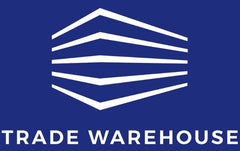The building industry is currently facing a series of economic challenges that are unprecedented in recent history.
These challenges stem from a range of factors, including the ongoing effects of the COVID-19 pandemic and heightened tensions in Europe.
This blog aims to provide a comprehensive overview of these issues, discussing the recent history of price hikes, supply chain disruptions, and the various factors impacting building material costs.
We will explore the reasons behind the current high costs, potential future trends, strategies for navigating this landscape, and the role of professional tradespeople in this dynamic market.
Understanding the Current High Cost of Building Materials
Economic Instability: Effects of the COVID-19 Pandemic and European Tensions on the Economy
The building industry has not been immune to the economic instability caused by recent global events.
The COVID-19 pandemic has disrupted supply chains, leading to shortages and increased prices.
Similarly, geopolitical tensions in Europe have added to these economic woes, affecting material costs and availability.
- Supply Chain Disruptions: Delays and shortages have been widespread, pushing up prices.
- Increased Demand vs. Reduced Supply: With more people investing in home improvements during lockdowns, demand has surged while supply remains constrained.
- Rising Manufacturing and Transportation Costs: The cost of manufacturing and transporting materials has risen, adding to overall expenses.
Key Takeaway: 🌟 The current high cost of building materials is a complex issue rooted in global economic instability, affected by factors such as supply chain disruptions and increased manufacturing costs.
Impact on Disposable Income and DIY Trends: How Financial Constraints are Altering Consumer Behavior in Construction
Financial constraints faced by consumers have led to a shift in construction and renovation behaviors.
DIY projects have gained popularity as individuals seek cost-effective ways to improve their living spaces:
- Increased DIY Projects: Homeowners are taking on more DIY projects to save on labor costs.
- Shift in Material Choices: There's a trend towards using more affordable or alternative materials.
- Delayed Projects: Some are postponing larger projects due to financial constraints.
Key Takeaway: 🌟 Economic pressures are shaping consumer behavior, leading to an increase in DIY projects and a shift towards more budget-friendly materials in construction.
The Future of Building Costs
Potential for Price Stabilisation: Analysing Expert Predictions on Future Price Trends
There is a mix of optimism and caution among experts regarding the future of building material prices. Some predict stabilisation, while others foresee continued volatility.
- Market Predictions: Analysts are divided, with some expecting stabilization and others anticipating continued fluctuations.
- Factors Influencing Predictions: These include ongoing supply chain issues, global economic stability, and consumer demand trends.
Key Takeaway: 🌟 The future of building material costs is uncertain, with expert predictions varying based on a range of influencing factors.
Long-term Economic Outlook: Understanding the Broader Economic Factors Influencing Building Material Costs
The cost of building materials is influenced by broader economic trends, including inflation rates, global trade dynamics, and industry-specific factors.
- Inflation and Interest Rates: These can significantly impact the cost of materials and construction loans.
- Global Trade Policies: Changes in trade policies can affect the availability and cost of imported materials.
- Technological Advancements: Innovations in manufacturing and logistics could potentially reduce costs.
Key Takeaway: 🌟 A comprehensive understanding of broader economic factors is crucial in anticipating future trends in building material costs.
Navigating the Current Building Costs Landscape
Budgeting Strategies: Tips for Managing Construction Costs in the Current Economic Climate
Effective budgeting is key to managing construction costs. Here are some strategies to consider:
- Detailed Cost Analysis: Break down costs to understand where savings can be made.
- Alternative Material Options: Consider using different materials that offer cost savings.
- Phased Construction: Implementing projects in phases can help spread out costs.
Key Takeaway: 🌟 Strategic budgeting and flexibility in material choices are vital for managing construction costs effectively in the current economic climate.
Project Prioritization: Advice on Focusing Resources on Essential Construction Tasks
Prioritizing projects can help in allocating resources more effectively, ensuring that essential tasks are completed first.
- Essential vs. Cosmetic Projects: Focus on projects that are necessary for structural integrity or functionality.
- Cost-Benefit Analysis: Evaluate the long-term benefits of each project against its cost.
- Seeking Professional Advice: Consulting with industry experts can provide insights into effective prioritization.
Key Takeaway: 🌟 Prioritizing essential construction tasks and conducting a thorough cost-benefit analysis are key in optimising resource allocation.
The Role of Professional Tradespeople
Evaluating the Cost vs. Value of Professional Labor: Balancing Labor Costs with the Quality of Work
Hiring professional tradespeople can be a significant part of construction costs, but their expertise often leads to better quality and efficiency.
- Quality of Workmanship: Skilled professionals can ensure higher standards and longevity.
- Time Efficiency: Experienced tradespeople can complete tasks more quickly and efficiently.
- Long-term Cost Savings: Properly done work can save money on repairs and maintenance in the long run.
Key Takeaway: 🌟 Investing in professional labor can be cost-effective in the long term, offering better quality, efficiency, and potential savings on future maintenance.
Finding Reputable Tradespeople: Tips for Choosing Reliable and Cost-Effective Professionals
Selecting the right professionals is crucial for a successful project. Here are some tips:
- Check References and Reviews: Look for tradespeople with positive feedback and proven track records.
- Get Multiple Quotes: Compare quotes to ensure you're getting fair pricing.
- Verify Credentials and Experience: Ensure the tradespeople have the necessary qualifications and experience.
Key Takeaway: 🌟 Choosing reputable and experienced professionals is key to ensuring quality work at a fair price.
Predicting the Future Market
Global Economic Factors: The Influence of Global Events on the Building Industry
Global events have a profound impact on the building industry, influencing material costs and availability.
- Political Stability: Geopolitical tensions can disrupt supply chains and affect prices.
- Global Pandemics and Natural Disasters: These events can lead to sudden changes in material availability and cost.
- Technological Innovations: Advances in technology can lead to more efficient production and reduced costs.
Key Takeaway: 🌟 Global economic and political events play a significant role in shaping the building industry, affecting material costs and availability.
Industry Recovery Post-Pandemic: Projecting the Recovery Trajectory of the Construction Sector
The construction sector's recovery post-pandemic is contingent on various factors, including economic stability and continued demand.
- Economic Recovery: As the global economy stabilizes, the construction industry is expected to follow.
- Sustainable Practices: Adoption of sustainable and efficient practices could lead to cost savings.
- Continued Demand for Housing and Commercial Spaces: This demand is likely to drive the industry's recovery.
Key Takeaway: 🌟 The construction sector's recovery is closely tied to global economic recovery, sustainable practices, and ongoing demand for new spaces.
Conclusion
The current state of building material costs is a complex interplay of global economic factors, supply chain disruptions, and consumer behavior changes. While the future of these costs is uncertain, understanding these dynamics can help individuals and businesses navigate these challenges more effectively. As we look forward, there is cautious optimism for stabilization and improvement in the market, contingent upon global economic recovery and industry adaptation.
In navigating these turbulent times, strategic planning, informed decision-making, and the judicious use of professional services can make a significant difference in managing construction costs and achieving successful outcomes. The key is to stay informed, flexible, and proactive in adapting to these ever-changing market conditions.

